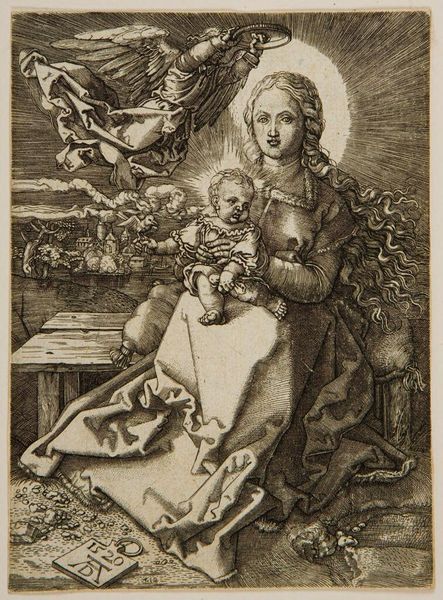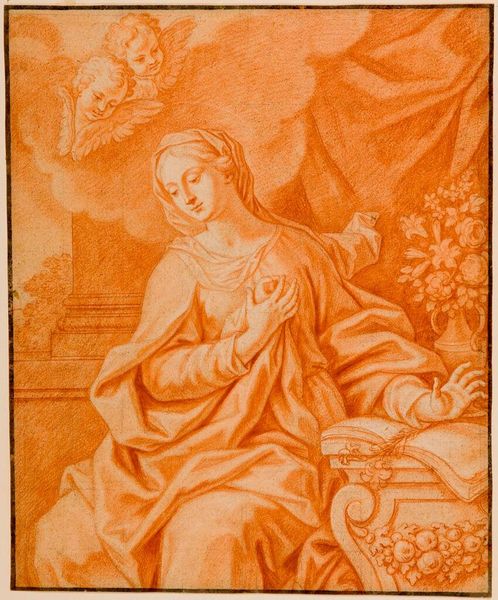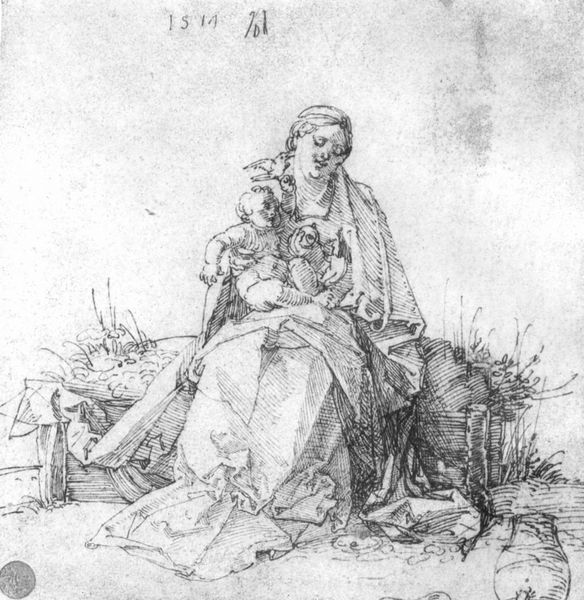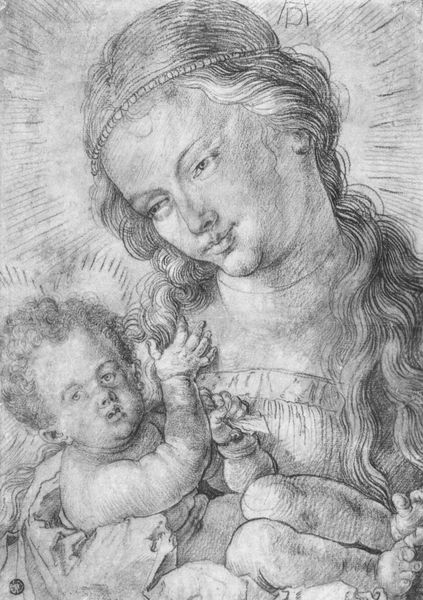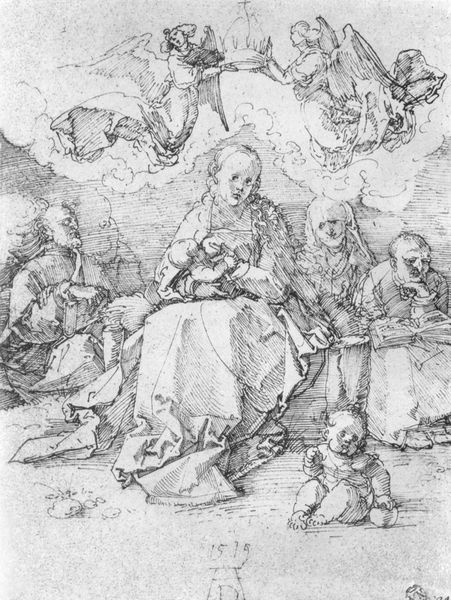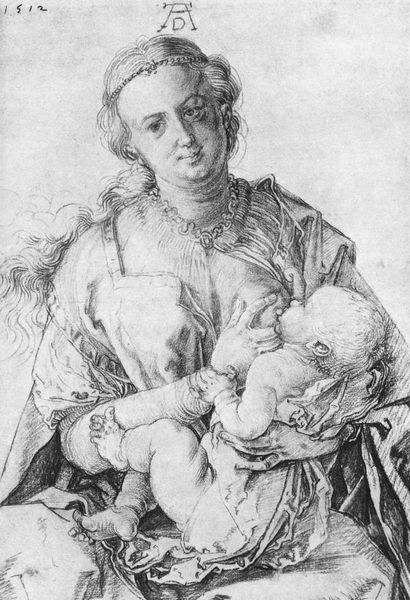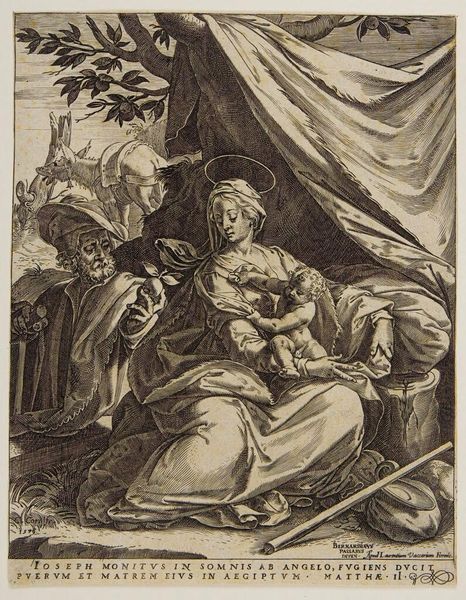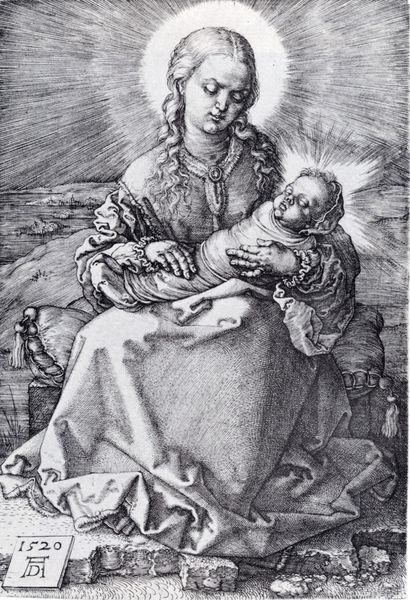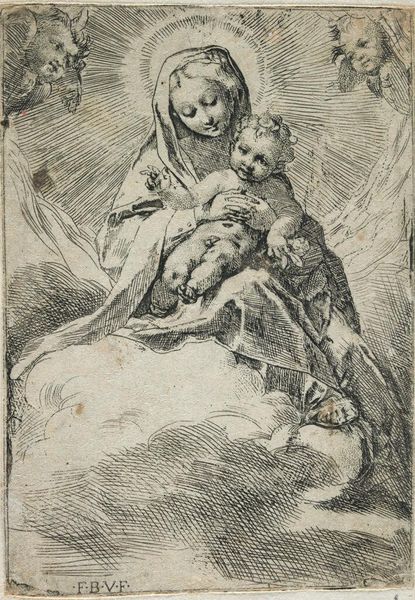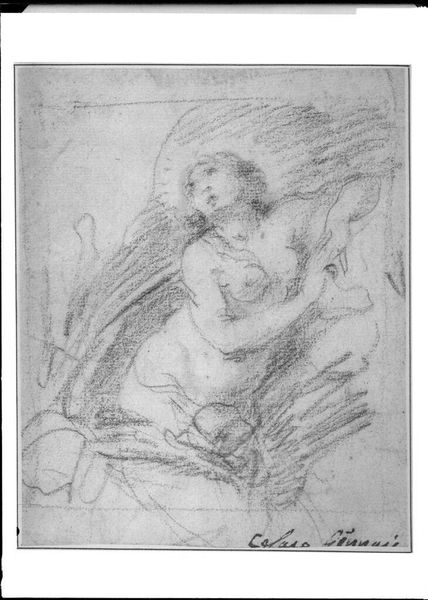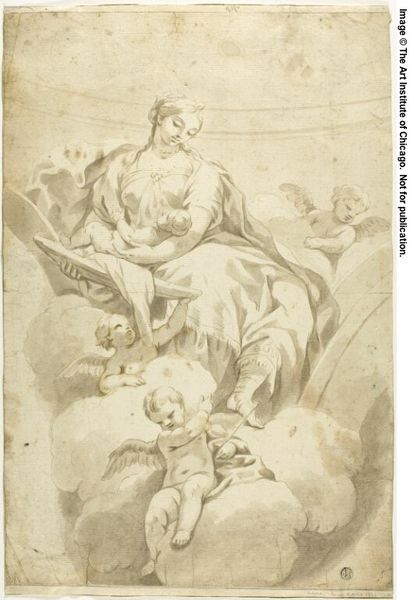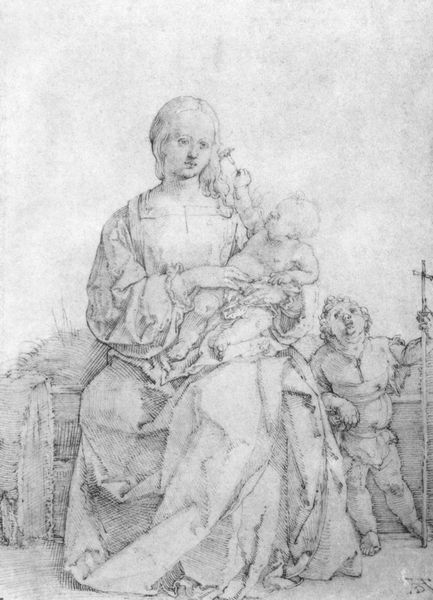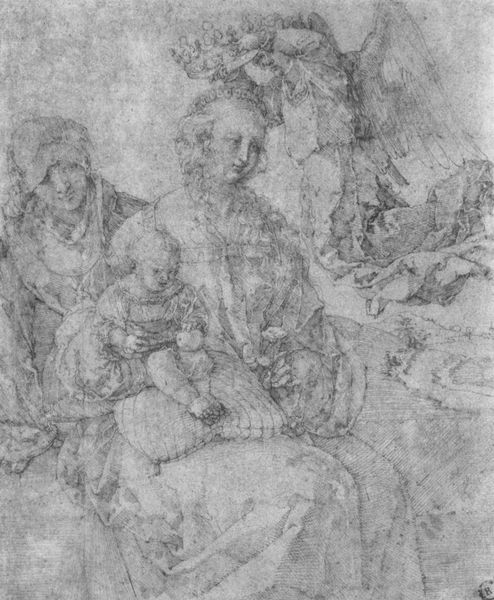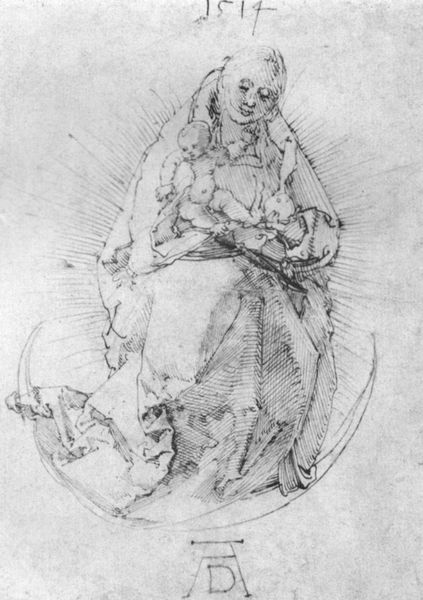
drawing, pencil
#
portrait
#
drawing
#
landscape
#
charcoal drawing
#
figuration
#
11_renaissance
#
child
#
pencil
#
genre-painting
#
northern-renaissance
#
miniature
#
christ
Copyright: Public domain
Curator: This evocative drawing is Albrecht Durer's "Madonna and Child on the Grassy Bank," created around 1515 using pencil and charcoal. Editor: The immediate impression is one of tenderness, almost fragility. The lightness of the line work makes it feel ethereal, even incomplete, yet deeply intimate. Curator: It is fascinating to observe Durer placing this iconic Christian image into a broader, humanist landscape, seemingly disrupting hierarchies. Here, the Virgin is not merely a religious figure but a woman situated within nature. How does that strike you from an iconographic perspective? Editor: It's a beautiful negotiation, actually. Durer retains symbolic elements like the celestial crown above Mary's head—a clear nod to her divine status. The landscape itself, a northern European scene, roots the holy figures in a specific time and place, lending authenticity to the image. Notice how the column at the bottom acts as a further anchor? It grounds the scene in classical antiquity, another vital thread. Curator: It definitely reflects a burgeoning societal shift. We see this interplay frequently in art of the Northern Renaissance – the divine right beside a more domestic, grounded, real depiction of Mary's place as the mother of the Christ-child. It's a moment when artistic portrayal began reflecting the human condition, right? The way artists situated marginalized bodies within dominant power structures through metaphor... Editor: Indeed, and look at the almost palpable weight of the infant Christ in Mary's arms. The foreshortening, the folds of her robes. Durer masterfully balances the spiritual with the profoundly corporeal. The sketch format somehow amplifies this vulnerability. It becomes less an immutable proclamation and more a tender glimpse. Curator: Exactly! What seems missing or unresolved offers avenues to consider the nuances of early 16th century motherhood. Mary becomes every mother. This moves beyond dogma to a raw presentation of vulnerability. Editor: Precisely. A very poignant point, when we read this drawing within an intersectional narrative today, Durer's work makes clear how icons are living texts that shift, transform, and bear witness. Curator: Agreed. Durer shows us a way to reclaim icons as sites of intersectional negotiation in broader socio-cultural landscapes. Editor: Yes. An exquisite drawing, and a deeply enriching dialogue.
Comments
No comments
Be the first to comment and join the conversation on the ultimate creative platform.
